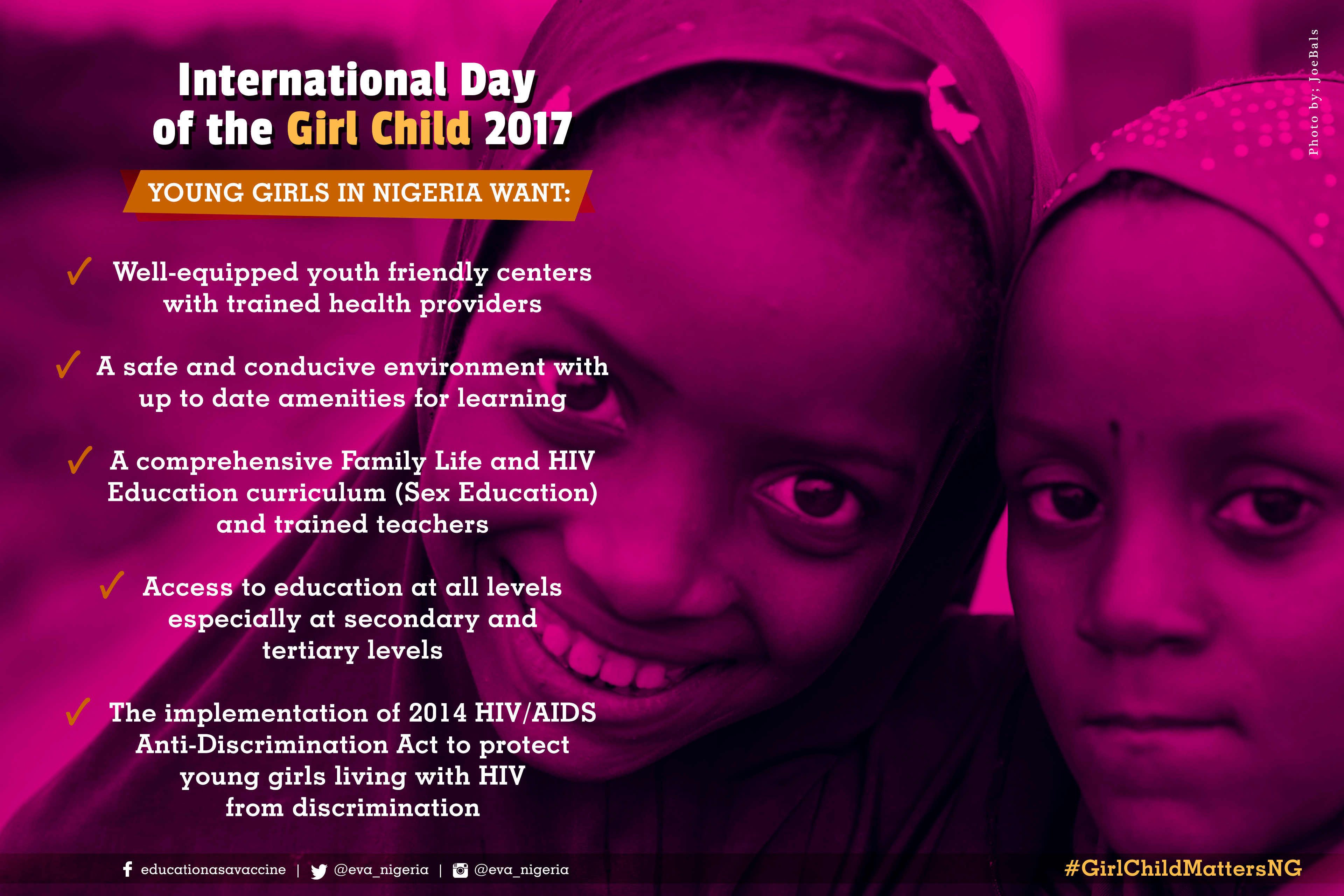The International Day of the Girl Child is celebrated annually on October 11 to raise awareness and highlight issues faced by girls around the world, especially, as it relates to inequality. This year’s theme is “The Power of the Adolescent Girl: Vision for 2030.”
This year, Education as a Vaccine asked girls to send in videos sharing the challenges they and their peers face and their vision for 2030. We compiled the stories and their calls for urgent change in the areas where their human rights are not protected.
And the data shows that their stories are not just anecdotes, their experiences are real and must be addressed in all spheres – family, community and government. Governments including the Nigerian government agreed to Vision 2030 and made commitments to goals that improve the health and wellbeing of adolescents and young people especially girls.
They told us about the:
Lack of access to education.
Lack of safety and sanitation in their schools.
Lack of access to sexual and reproductive health information and services.
According to USAID, more than 62 million girls around the world have no access to education with one in four girls getting married before age 18. Many girls around the world are vulnerable to acts of sexual violence and the perpetrators often go unpunished. In Nigeria, the contraceptive prevalence for all adolescent women aged 15-19 years is low.
The Day of the Girl Child helps raise awareness and draws attention not only of the issues that girls face, but also how recognizing the rights of girls for a more just and equal society.
The girls have told us their stories and we are joining forces with them to ask The Nigerian government to make strategic investment in the health and education of adolescent and young girls in other to achieve Vision 2030
“The Power of the Adolescent Girl: Vision for 2030” serves as a reminder to policy makers and governments how millions of girls are held back and denied an equal chance in life just because they are girls.
Young girls in Nigeria want;
· Access to education at all levels especially at secondary and tertiary levels
· A safe and conducive environment with up to date amenities for learning
· A comprehensive Family Life and HIV Education curriculum (Sex Education) and trained teachers
· Well-equipped youth friendly centers with trained health providers

